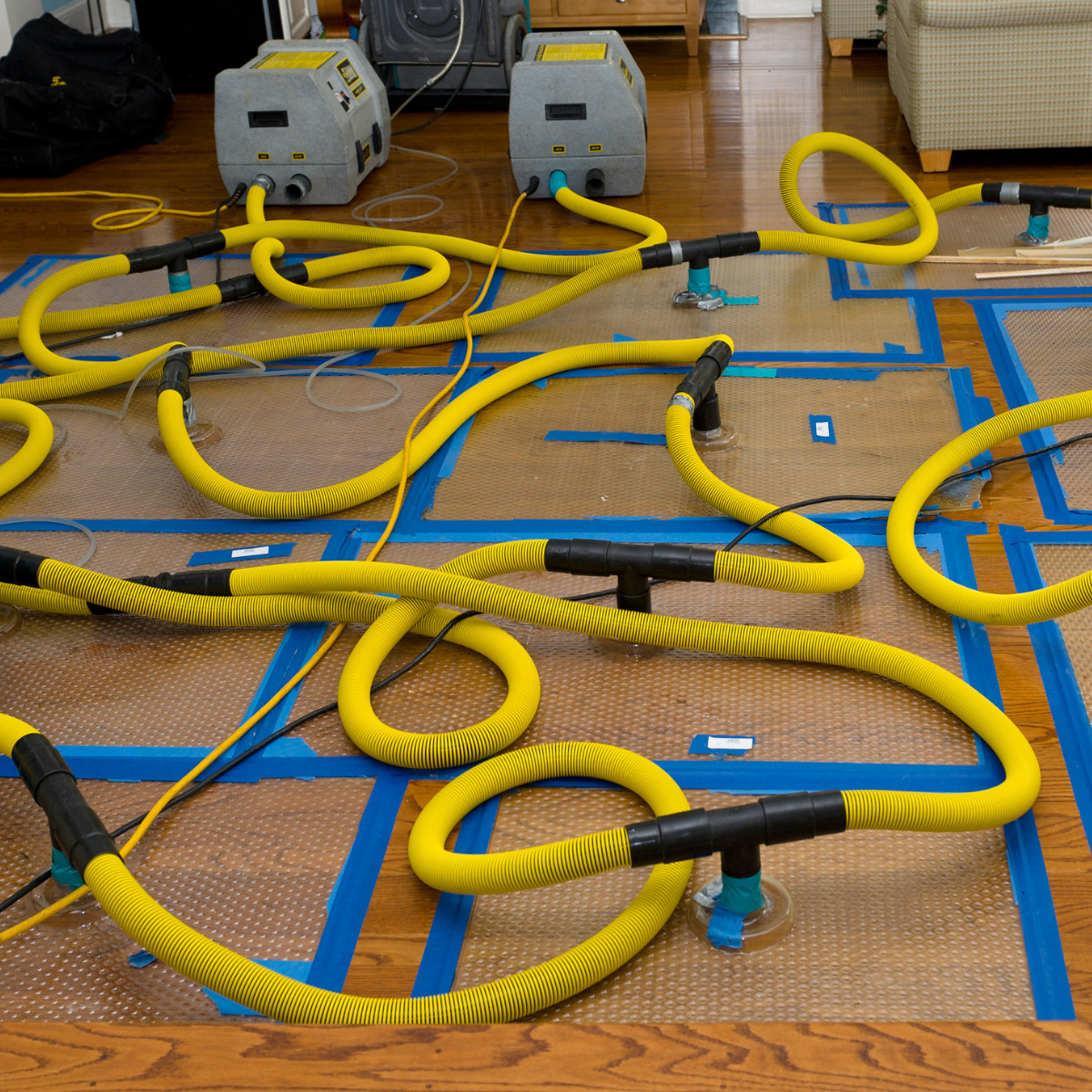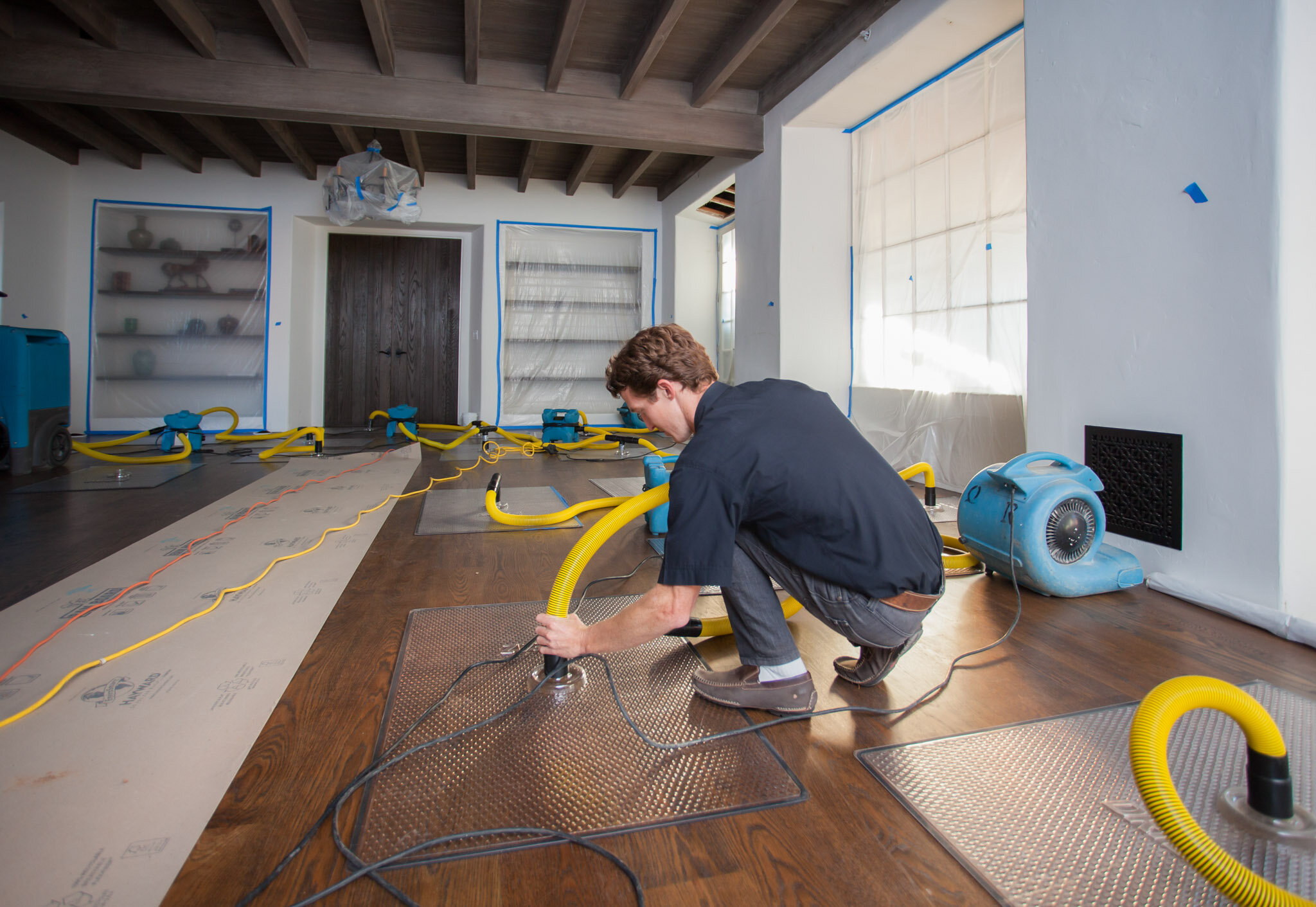Water Damage Restoration 101: Recognizing the Process and Price
Water damage can strike all of a sudden, leaving homeowners in a state of complication. Recognizing the reconstruction procedure is essential for effective recuperation. From reviewing the damage to choosing the best service company, each step influences the overall outcome and cost. Factors such as the kind of water damage and necessity also play a considerable function. What are the particular techniques used in remediation, and just how can one plan for prospective expenses?
Kinds of Water Damage

Initial Analysis and Inspection

Water Extraction Methods
Adhering to the initial assessment, effective water extraction methods are utilized to minimize damage and protect against further problems. These methods include the usage of customized tools such as industrial-grade vacuums and submersible pumps - Mold Remediation After Water Damage. The option of method depends upon the volume of water present and the sort of products affected. For standing water, submersible pumps are normally used for rapid elimination, while vacuums are optimal for extracting water from carpetings and furniture. Additionally, progressed techniques like water removal floor coverings may be utilized for hard-to-reach areas - Water Damage Restoration. The objective is to eliminate as much water as possible, decreasing the capacity for mold and mildew development and structural damage. Trigger and reliable water removal is essential in the total water damage restoration procedure
Drying and Dehumidification Process
When the water removal is total, the drying out and dehumidification procedure comes to be essential to bring back the damaged area. This stage usually uses industrial-grade dehumidifiers and air movers to properly reduce moisture levels. The dehumidifiers reel in moist air, removing excess humidity, while air moving companies flow air to increase dissipation. Tracking devices is typically used to track humidity and temperature degrees, making certain perfect drying out problems. The period of this process can vary depending upon the level of the water damage and ecological factors. It is important to thoroughly dry all influenced products, consisting of walls, flooring, and furnishings, to stop mold growth and structural damage. Proper execution of this step is essential for an effective remediation result.
Cleaning Up and Sterilizing Afflicted Locations
When the drying process is total, a comprehensive preliminary evaluation and inspection of influenced locations is important to identify contamination degrees. Effective cleaning methods and ideal items need to then be used to remove particles and stains. Sanitization and sanitation approaches are vital to assure that hazardous pathogens are removed, bring back the space to a secure condition.
First Evaluation and Examination
Before beginning any type of reconstruction efforts, a detailed initial evaluation and examination of the affected areas are important for efficient cleansing and disinfecting. This process involves identifying the extent of water damage, figuring out the resource of the water breach, and evaluating the materials impacted. Assessors typically search for indications of mold growth, structural stability concerns, and harmed belongings. The assessment likewise includes inspecting moisture levels using specialized tools to assure no concealed water pockets stay, as these can bring about more issues. Recording the findings is important for preparing the following steps in the repair process. An in-depth preliminary evaluation enables restoration professionals to design a targeted strategy for efficient cleansing and sterilizing, eventually decreasing damage and health dangers.
Cleansing Strategies and Products
Reliable cleansing and disinfecting of water-damaged areas need a variety of techniques and products tailored to the particular materials impacted. For porous surfaces like drywall and carpeting, removal methods are important to get rid of excess wetness, followed by deep cleansing with specialized detergents. Non-porous materials such as floor tile or metal can be cleansed utilizing commercial-grade cleansers that efficiently remove contaminants. Steam cleansing is another effective method, particularly for carpetings and upholstery, as it utilizes high temperature levels to remove germs and mold (Flood Cleanup Services). Furthermore, green items are significantly prominent for their safety and efficacy - Water Extraction And Drying. Inevitably, picking the appropriate cleansing approaches and products not only ensures prompt cleanliness but also help in preventing further damage and carcinogen linked with water breach
Sanitization and Disinfection Techniques
When addressing water damage, appropriate sanitization and sanitation methods are vital to ensure the safety and security and health of the afflicted atmosphere. After first cleansing, surfaces need to be treated with ideal anti-bacterials to eliminate pathogens, mold, and germs that grow in moist conditions. Typical techniques include using EPA-approved chemical disinfectants, which can be used through splashing or cleaning techniques. In addition, ultraviolet (UV) light systems can successfully sanitize locations by reducing the effects of bacteria without rough chemicals. The option of method typically relies on the sort of products affected and the level of contamination. Ultimately, extensive sanitization not only restores a safe living space but additionally aids prevent future health risks connected with sticking around moisture and mold and mildew growth.

Fixings and Restoration Options
Reviewing the damage brought on by water exposure is crucial for establishing the proper repair work and repair alternatives. Property owners may deal with various issues, including damaged drywall, distorted flooring, and compromised structural aspects. Depending upon the degree of the damage, repair services might entail changing areas of drywall, installing brand-new floor covering, or reinforcing structural beams. In cases of extreme damage, total substitute of damaged products could be needed. Furthermore, professional restorers often advise utilizing moisture meters to analyze concealed moisture levels before selecting the most check here effective training course of activity. It is very important to act promptly to stop mold growth and more degeneration. Picking the appropriate options not only restores the building yet likewise guarantees lasting security and performance.
Aspects Influencing Restoration Prices

The extent of water damage directly influences the repair costs home owners can expect to incur. Variables such as the source of the water, the duration of exposure, and the damaged materials substantially influence prices. For instance, tidy water damage from a damaged pipeline is usually much less costly to restore compared to damage triggered by sewer. Additionally, the level of contamination dictates the requirement for specialized cleansing and disposal solutions, better increasing costs. Geographical area additionally contributes, as regional labor rates and accessibility of restoration services can vary. Finally, the seriousness of the response affects costs; quicker interventions usually cause reduce overall expenses by avoiding additional damage. Understanding these variables is essential for home owners when approximating repair expenses.
The three main types of water damage are classified based on contamination degrees: tidy water, gray water, and black water. A thorough preliminary assessment and examination are important actions in the water damage remediation procedure. For standing water, submersible pumps are normally used for quick removal, while vacuums are perfect for drawing out water from carpetings and upholstery. The degree of water damage directly affects the reconstruction sets you back homeowners can anticipate to incur. Clean water damage from a busted pipeline is normally less expensive to recover compared to damage created by sewage.